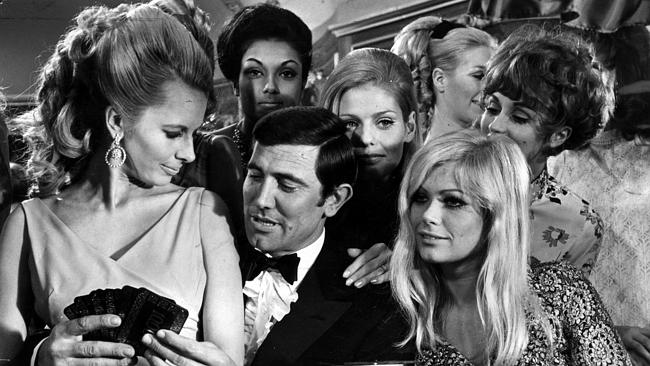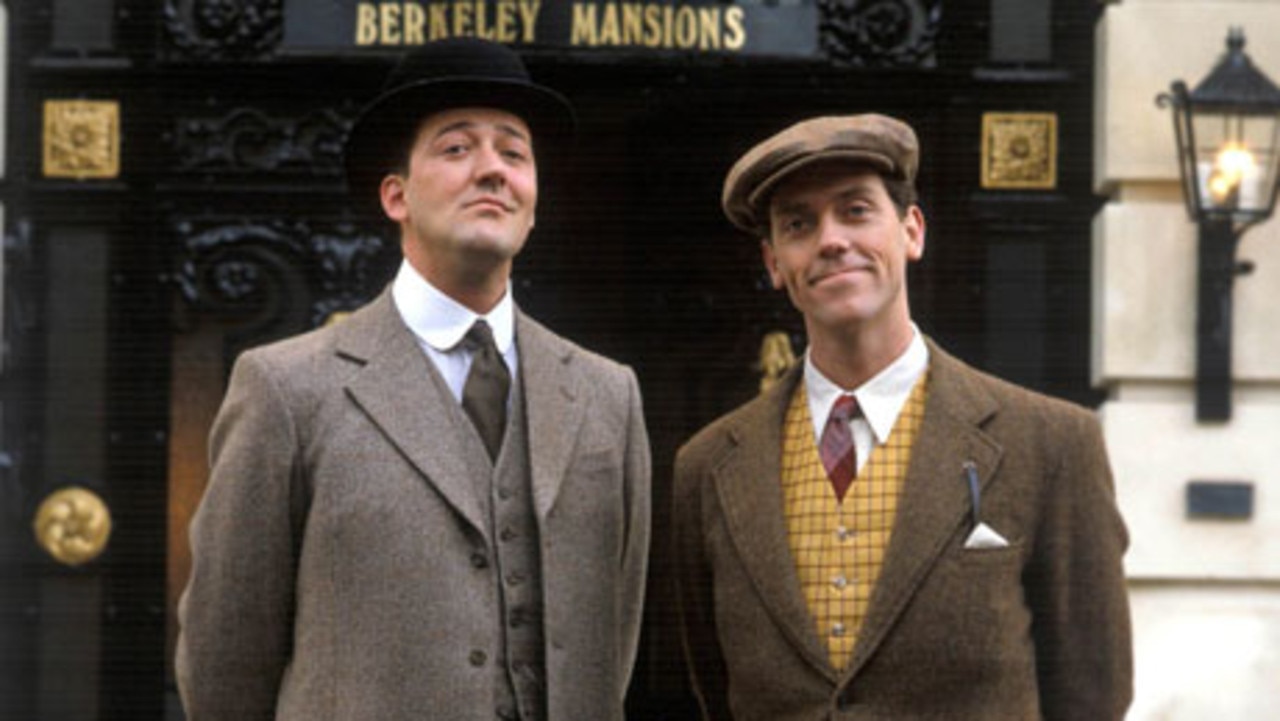James Bond actor George Lazenby on playing 007 after Sean Connery
‘Getting laid in a suit is difficult.’ Is this why George Lazenby stopped being 007?

How George Lazenby, a 28-year-old Australian model and former car salesman, persuaded Albert R. “Cubby” Broccoli and Harry Saltzman to cast him in the role of James Bond is the stuff of cinematic legend.
Lazenby, who played the immortal Bond in the 1969 film On Her Majesty’s Secret Service, says it was his boldness and confidence that convinced the powerful duo he could take over from Sean Connery, who personified the role.
“I was fearless as I had nothing to lose,” Lazenby, 76, tells Review in a rare interview from Los Angeles, where he now lives, having made his fortune in real estate.
“I always thought people got to where they wanted because they wanted it, and were better at it than anyone else. I can’t tell you why, but I felt at around the age of 21 that I could do anything I wanted — and did.”
With Daniel Craig’s latest Bond film, Spectre, earning a staggering $792 million at the global box office — and $30m in Australia to date — the world is in the grip of another wave of 007 nostalgia. All previous 23 Eon-produced Bond films are on high rotation replay on television, and a steady stream of books and documentaries is flooding the market. And amid the excitement, Lazenby’s one-off portrayal of Bond is winning new fans.
Directors Christopher Nolan and Steven Soderbergh have recently rated OHMSS as their favourite Bond film, praising its direction and cinematography, score and storyline. It is one of Ian Fleming’s better 007 novels and therefore a film of greater depth than most others in the Bond canon.
Connery relinquished the role of the indefatigable British Secret Service agent after filming You Only Live Twice (1967). Lazenby was working as a model in Europe at the time, having followed a girlfriend there. In London he was best known for a goofy spot on a chocolate commercial. Maggie Abbott, an agent, recommended he audition for the vacant role. “She said none of the 300 people tested on film have what I had,” Lazenby recalls. What was it? “She said: ‘Your huge self-confidence.’ ”
Lazenby went to Connery’s tailor in London and picked up a suit the actor had ordered but didn’t want. He visited Connery’s barber and asked for the same haircut. He already had a Rolex watch. But Lazenby couldn’t get an audition as he wasn’t a member of the actors union.
Undeterred, he talked his way past the receptionist where the auditioning was taking place, raced upstairs, leaned in the doorway and said, “I hear you’re looking for the next James Bond.”
The testing went on for months. Lazenby had voice coaching. They corrected his Australian swagger. Romantic scenes were shot. Lazenby says the producers even sent women to a hotel room to seduce him, to check that he wasn’t gay. Saltzman was sold when Lazenby accidentally flattened a stuntman.
The new Bond was announced in October 1968. It was only then that Lazenby revealed to director Peter Hunt that he had never acted in a movie. Hunt, Lazenby says, was stunned, but said: “Stick to your story and I’ll make you the next James Bond.”
Contrary to myth, OHMSS was a commercial success. With a budget of $US8 million, the film’s worldwide gross was $82 million — more than Connery’s first two films, Dr No ($59 million) in 1962 and From Russia with Love ($78 million) in 1963.
The urbane Roger Moore, who played Bond in seven films from 1973 to 1985, rates himself as “a little bit behind George Lazenby” and has said OHMSS was “a great film”. Moore and Lazenby remain friends; they occasionally email jokes to each other.
Lazenby recalls dining in a Los Angeles restaurant sometime after the film was released. Connery walked in, spied Lazenby, shook his hand and said, “You were good.”
Connery, it is universally accepted, was Bond. While Craig has found favour in the role, the famous Scots actor set the standard. He mastered Bond’s signature qualities: intelligence, toughness, energy, droll humour and sex appeal.
It didn’t help Lazenby’s cause that Connery returned to the role in 1971 for Diamonds are Forever. The impression was that Lazenby had been a mistake, an aberration.
Yet OHMSS showed that the character could transcend an actor. Lazenby ensured a franchise was born. As Broccoli later said, “James Bond 007 is the real star.” But if the story of how Lazenby won the role of Bond is astonishing, the story of how he gave it up is even more so.
“Yes, I turned down doing another film,” he says. “It was hippie time and getting laid in a suit was difficult. You had to have long hair and bell bottoms. It was the time of Easy Rider. Bond was part of the establishment.
“I was restricted to about five women for nine months. I’m not bragging but once in a while, before I was Bond, I passed that number in a day … it was a wonderful, crazy time.”
Promoter Ronan O’Rahilly — of pirate ship Radio Caroline fame — convinced Lazenby that Bond was passe and there were better film roles with larger pay packets. “Bond is Connery’s gig,” he told Lazenby. “Make one and get out.”
“I had finished the film and not signed the contract,” Lazenby says. “I had a manager [O’Rahilly] who kept sending contract changes back.” Saltzman offered Lazenby £1 million for a second Bond film. He turned it down. David Picker, the president of United Artists, offered Lazenby a seven-film contract with the offer to do other movies in between his 007 commitments. That was also rejected.
OHMSS premiered in December 1969. Largely filmed in the Swiss Alps and in Portugal, it is faithful to Fleming’s story about Bond courting and marrying Teresa di Vicenzo (Diana Rigg), the daughter of underworld figure Marc-Ange Draco (Gabriele Ferzetti), while tracking down criminal mastermind Ernst Stavro Blofeld (Telly Savalas).
After the rough fighting opening sequence in OHMSS, Lazenby turns to the camera and says: “This never happened to the other fella.” It is the only time Bond has broken character.
“Yes, that was my line,” he recalls. “Because I did my own stunts, I used to ask, ‘Did the other fella have to do this?’ ” Hunt told him to say it on camera to “break the ice” with the audience.
Lazenby’s Bond still likes martinis shaken not stirred; uses a Walther PPK pistol; drives an Aston Martin (DBS); flirts with Miss Moneypenny (Lois Maxwell); and has testy relationships with M (Bernard Lee) and Q (Desmond Llewelyn). There is plenty of stunt action but less humour, fewer gadgets and a greater focus on character.
In the closing scene, Bond’s new wife is killed in machinegun fire by Irma Bunt (Ilse Steppat), Blofeld’s henchwoman. It all but reduces Bond to tears. We don’t see Bond reveal as much emotion until Craig’s Casino Royale (2006).
Hunt wanted to end the film with the newlyweds driving off into the sunset, with the next Bond film commencing with the tragic scene. But this would not have been true to Fleming’s novel. Nevertheless, it left audiences shocked and deflated.
The filming of OHMSS did not go well. “The director and I fell out on the first day,” Lazenby says. “We didn’t speak for the whole film.” There were reports of actors not getting along and production difficulties. Lazenby was arrogant, demanding and petulant.
“After the film I was told by one of the stunt guys that he told Hunt many times that I could get hurt,” Lazenby recalled. “Hunt replied, ‘No one has seen him yet. If he gets hurt, we get a second shot.’ ” Yet Hunt later praised Lazenby’s portrayal of Bond.
Lazenby says he needed to do more “growing up” and learned from the experience. Despite the promises from O’Rahilly, the lucrative film roles never came. Lazenby believes he was “blacklisted”. He became an occasional B-grade movie and television actor.
Of the six actors to officially play Bond, Lazenby is the only Australian, though Mel Gibson, Sam Neill and Sam Worthington, among others, have been considered for the role. Fleming, meanwhile, envisaged Bond visiting Australia “in search of trouble and just that one, final, fatal Australian blonde”.
Last September, Lazenby returned to his home town of Goulburn, NSW, and happily mixed with fans at the inaugural SPYfest, a film festival organised by Goulburn Mulwaree Council, celebrating the spy film genre. Yet he admits he has not seen Spectre. “I haven’t seen a Bond film since mine or met the latest fella [Craig],” he says. “As for what do I think of the other Bonds, they are all actors doing what they do. Yet all stuck with the stigma of Bond.”
Lazenby regrets not doing “one or two” more Bond films. But in the end, it was his choice. “I could have had a great film career if I toed the line,” he reflects. “Yet I wouldn’t have had the wonderful experiences in life that I’ve had and I wouldn’t have lived my life the way I wanted.”





To join the conversation, please log in. Don't have an account? Register
Join the conversation, you are commenting as Logout